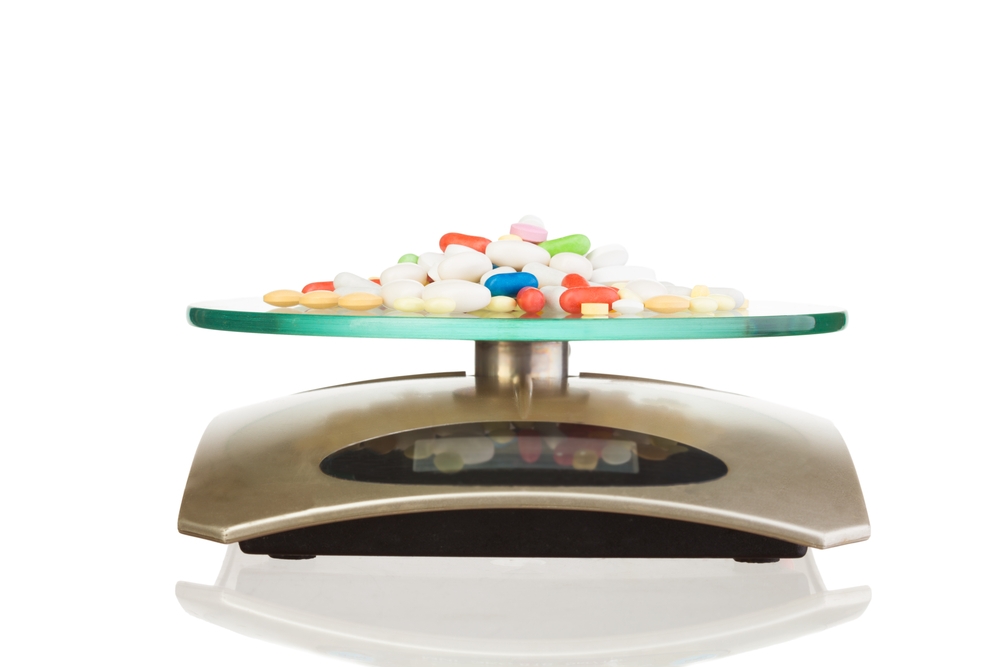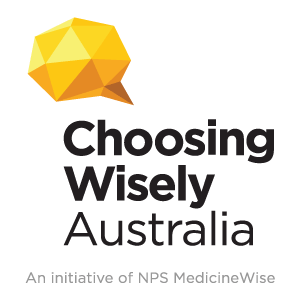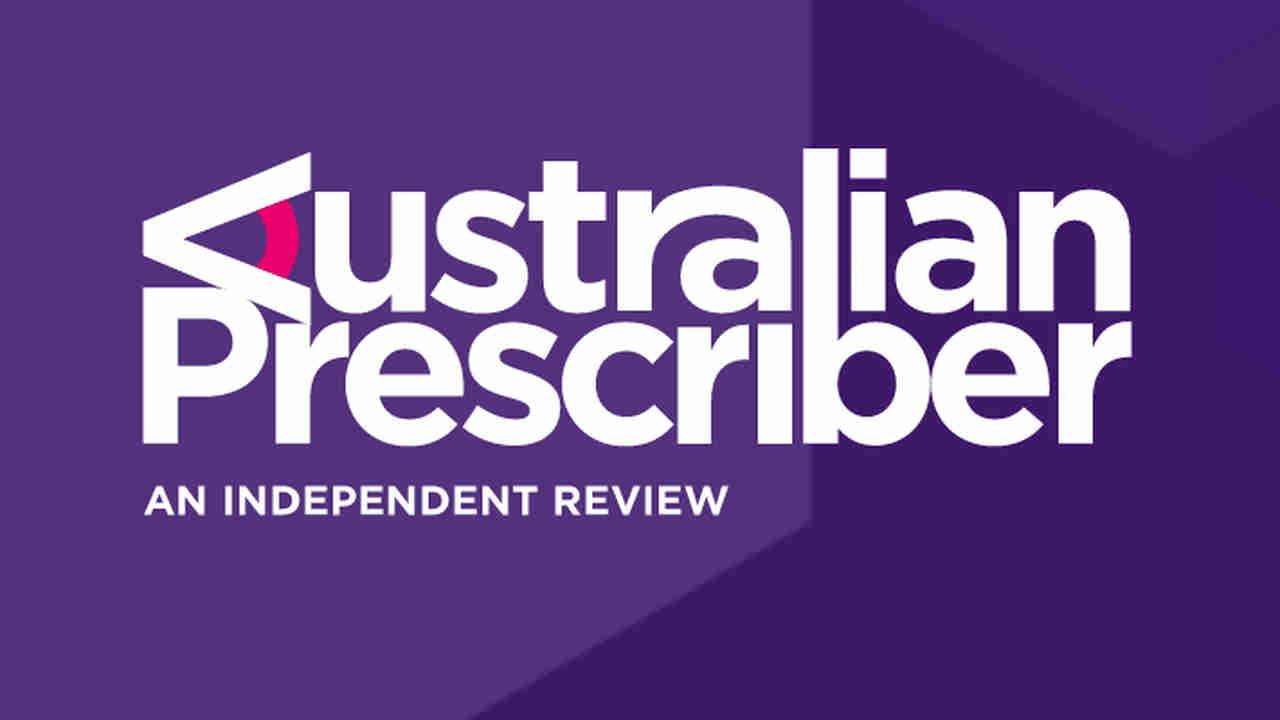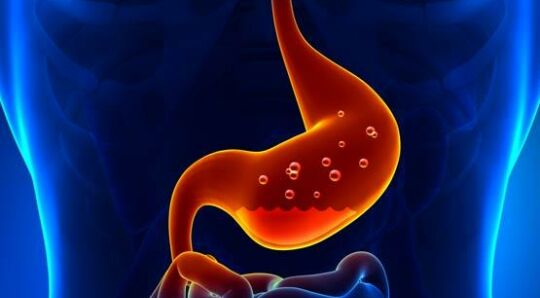Key points
- A person is likely to have GORD if they have reflux symptoms that are frequent (two or more episodes per week) or severe enough to significantly impair their quality of life.
- Diet and lifestyle modifications may be sufficient for people with mild intermittent reflux symptoms, but those with GORD will also require treatment with a PPI.
- For patients with, or suspected of having, GORD, start a standard-dose PPI for 4 to 8 weeks with a planned review.
- Regularly review patients who are taking PPIs for GORD, with the aim of reducing or stopping PPI treatment when symptoms are well controlled.
Practice review – GORD: stepping down PPIs

Australian GPs recently received a Practice review on their prescribing of PPIs in practice.
- Reflect on your data in relation to your patients and their indications for PPIs
- Find more information to help you interpret and understand your data
- Access a sample report
- Reflect on your data in relation to your patients and their indications for PPIs
- Find more information to help you interpret and understand your data
- Access a sample report
Medicinewise News: Stepping the appropriate path with GORD medicines

PPIs are among the most prescribed medicines in Australia. Guideline recommendations for GORD encourage starting daily PPI treatment for 4 to 8 weeks, and reducing or stopping treatment when GORD symptoms are well controlled.
News feature: PPI use and risk of death – cause for concern?

A 2017 publication found an increased risk of death with PPI use. Although the study results were statistically significant, how the findings relate to clinical practice is worthy of discussion.
Choosing Wisely Australia

Choosing Wisely Australia helps healthcare providers and consumers have important conversations about improving the quality of healthcare by reducing unnecessary and sometimes harmful tests, treatments, and procedures.
Led by Australia’s colleges, societies and associations and facilitated by NPS MedicineWise, Choosing Wisely Australia challenges the way we think about healthcare, questioning the notion 'more is always better'.
5 questions to ask your doctor or other healthcare provider is a resource that can help patients ensure they end up with the right amount of care.
See the Choosing Wisely recommendations on proton pump inhibitors
Recommendation from the Royal Australian College of General Practitioners
Recommendations from RACP Paediatrics & Child Health Division
Recommendations from Gastroenterological Society of Australia
Australian Prescriber: The management of gastro-oesophageal reflux disease

Charlotte Keung and Geoffrey Hebbard
Aust Prescr 2016;39:36–9
GORD is one of the most common gastrointestinal conditions and may result in significant morbidity. In patients with typical symptoms, treatment can be based on symptoms alone with a trial of PPI therapy.
CPD options
For GPs
- Educational visit: Starting, stepping down and stopping medicines (bookings closed)
- Case study: PPIs: Reviewing treatment for gastro-oesophageal reflux disease
For nurses
For pharmacists
For your patients
Clinical resources and tools
Clinical guidelines
Therapeutic Guidelines: Gastrointestinal
The Gastrointestinal Guidelines of eTG complete have a chapter on disorders of the oesophagus, which includes detailed information about gastro-oesophageal reflux and GORD, as well as medicines recommended to treat these conditions.
This clinical update on the diagnosis and management of GORD was published by the Digestive Health Foundation and sponsored by the Gastroenterological Society of Australia (GESA). It is the fifth edition of these guidelines, and was initially planned to be updated again in 2013/2014.
Australian Medicines Handbook: Gastrointestinal drugs
The Gastrointestinal drugs chapter of the Australian Medicines Handbook has a section on GORD.
NICE clinical guideline on GORD
Clinical guideline CG184 was developed by the National Institute for Health and Care Excellence (NICE) in the UK. It covers the investigation and management of GORD and dyspepsia in people aged 18 and over. It also makes detailed recommendations on Helicobacter pylori eradication.
bpacNZ 2014 update on the management of GORD
The Best Practice Advocacy Centre New Zealand (bpacnz) is an independent, not-for-profit organisation that aims to deliver educational and continuing professional development programs to medical practitioners and other health professionals throughout New Zealand.
This update includes information on GORD complications, diagnosis and management. It aligns with Australian recommendations.
5 Questions to ask your doctor or other healthcare provider

Choosing Wisely Australia helps healthcare providers and consumers have important conversations about improving the quality of healthcare by reducing unnecessary and sometimes harmful tests, treatments, and procedures.
Led by Australia’s colleges, societies and associations and facilitated by NPS MedicineWise, Choosing Wisely Australia challenges the way we think about healthcare, questioning the notion 'more is always better'.
5 questions to ask your doctor or other healthcare provider is a resource that can help patients ensure they end up with the right amount of care.
Research summary
Table 1:
Diet and lifestyle
| Reference | Results/Recommendations |
|---|---|
| Kang H-E et al. Lifestyle measures in the management of gastro-oesophageal reflux disease: clinical and pathophysiological considerations. Ther Adv Chronic Dis 2015;6:51–64. | In this systematic review, an association was found between smoking and high body mass index (BMI) and gastro-oesophageal reflux disease (GORD). There was good evidence that weight reduction and stopping smoking could reduce symptoms of GORD. |
| Ness-Jensen E et al. Tobacco smoking cessation and improved gastroesophageal reflux. A prospective population-based cohort study: the HUNT Study. Am J Gastroenterol 2014;109:171–7. | In this large, prospective, population-based cohort study, people who stopped smoking had an almost two-fold improvement in severe reflux symptoms (adjusted odds ratio [OR] 1.78, 95% confidence interval [CI] 1.07 to 2.97) compared with people who continued to smoke. The improvement was seen in people with a normal BMI taking an antacid at least weekly. |
| Ness-Jensen E et al. Weight loss and reduction in gastroesophageal reflux. A prospective population-based cohort study: the HUNT study. Am J Gastroenterol 2013;108:376–82. | In this large, prospective, population-based cohort study, among people taking no or less than weekly antireflux medicines, there was a two-fold improvement in reflux symptoms following a >3.5 kg/m2 decrease in BMI compared with a <0.5 kg/m2 change (OR 1.98, 95% CI 1.45 to 2.72). The corresponding odds increased four-fold among people taking antireflux medicines at least weekly (OR 3.95, 95% CI 2.03 to 7.65). There was a was dose-dependent association between weight loss and improved reflux symptoms (p <0.001). |
| Singh M et al. Weight loss can lead to resolution of gastroesophageal reflux disease symptoms: a prospective intervention trial. Obesity 2013;21:10.1002/oby.20279. | In this prospective cohort study, among people who were overweight or obese, an average weight loss of 13.1 kg from baseline was associated with a significant reduction in reflux symptoms (15% vs 37%; p <0.01). |
| Khan BA et al. Effect of bed head elevation during sleep in symptomatic patients of nocturnal gastroesophageal reflux. J Gastroenterol Hepatol 2012;27:1078–82. | In this small study, which was conducted among people with nocturnal reflux symptoms, compared with no bed head elevation at baseline, elevation of the bed head by 20 cm led to improvements at day 7 in mean supine reflux time (15.0% ± 8.4 vs 13.7% ± 7.2; p = 0.001), mean acid clearance time (3.8 min ± 2.0 vs 3.0 min ± 1.6, p = 0.001) and mean number of reflux episodes 5 minutes or longer (3.3 ± 2.2 vs 1.0 ± 1.2; p = 0.001). Sleep disturbance improved in 13/20 (65%) patients following elevation of the bed head. |
| Jacobson BC et al. Body-mass index and symptoms of gastroesophageal reflux in women. N Engl J Med 2006;354:2340–8. | In this case-control study, women who reduced their BMI by 3.5 kg/m2 had nearly a 40% reduced risk of reflux symptoms (at least once a week) compared with women whose BMI did not change (OR 0.64, 95% CI 0.42 to 0.97). The risk of having frequent symptoms increased by more than two-fold in women whose BMI increased by more than 3.5 kg/m2 (OR 2.29, CI 1.84 to 2.86). There was a dose-dependent association between increasing BMI and frequency of reflux symptoms (p <0.001). |
| Duroux P et al. Early dinner reduces nocturnal gastric acidity. Gut 1989;30:1063–7. | In this small study, which was conducted among healthy volunteers, early dinner (at 6 pm) was associated with higher intragastric pH after midnight compared with late dinner (at 9 pm). The study suggests that avoidance of late night meals may result in reduced nocturnal gastric acidity, but not necessarily symptoms. |
Table 2: Rebound acid hypersecretion
| Reference | Results/Recommendations |
|---|---|
| Lodrup AB et al. Systematic review: symptoms of rebound acid hypersecretion following proton pump inhibitor treatment. Scand J Gastroenterol 2013;48:515–22. | In this meta-analysis, five studies were included and analysed. In two studies that were conducted among asymptomatic healthy individuals treated with a proton pump inhibitor (PPI), 44% experienced acid-related symptoms up to 4 weeks after PPI treatment was withdrawn. No signs of symptoms caused by rebound acid hypersecretion were found in three studies that investigated PPI withdrawal in patients with reflux disease. |
| Niklasson A et al. Dyspeptic symptom development after discontinuation of a proton pump inhibitor: a double-blind placebo-controlled trial. Am J Gastroenterol 2010;105:1531–7. | In this randomised controlled trial with healthy patients (no upper GI symptoms) given a PPI or placebo, 11 of 25 patients (44%) taking a PPI developed dyspepsia after PPI discontinuation, compared with 2 of 23 patients (9%) in the placebo group (p <0.01). |
| Reimer C et al. Proton-pump inhibitor therapy induces acid-related symptoms in healthy volunteers after withdrawal of therapy. Gastroenterology 2009;137:80-7. | In this randomised controlled trial with healthy patients (no upper GI symptoms) given a PPI or placebo, 26 of 59 patients (44%) taking a PPI experienced dyspepsia, heartburn or acid regurgitation after PPI discontinuation, compared with 9 of 59 (15%) in the placebo group (p <0.001). Gastrointestinal Symptom Rating Scale (GSRS) scores for acid-related symptoms were significantly higher in the PPI group than in the placebo group at week 10 (1.4 ± 1.4 vs 1.2 ± 0.9; p = 0.023), week 11 (1.4 ± 1.4 vs 1.2 ± 0.9; p = 0.009) and week 12 (1.3 ± 1.2 vs 1.0 ± 0.3; p = 0.001). |
| Hunfeld NGM et al. Systematic review: rebound acid hypersecretion after therapy with proton pump inhibitors. Aliment Pharmacol Ther 2007;25:39–46. | In this systematic review, eight studies were included. Five studies (including four randomised studies) did not find any evidence for rebound acid hypersecretion after PPI discontinuation. None of these five studies investigated Helicobacter pylori status. Of the remaining three studies, two assessed H pylori status. These two studies (with non-randomised study designs) suggested an increase in acid secretion in H pylori-negative patients after PPI discontinuation. |
Table 3: Long-term risk associated with PPI use: bone fractures
| Reference | Results/Recommendations |
|---|---|
| Eom C-S et al. Use of acid-suppressive drugs and risk of fracture: a meta-analysis of observational studies. Ann Fam Med 2011;9:257–67. | In this meta-analysis, compared with non-use, PPI use was associated with a moderate increase in risk of any fracture (adjusted OR 1.29, 95% CI 1.18 to 1.41, I2 69.8%; n = 10) but H2 receptor antagonist use was not associated with an increased fracture risk (adjusted OR 1.10, 95% CI 0.99 to 1.23, I2 86.3%; n = 7). |
| Kwok CS et al. Meta-analysis: risk of fractures with acid-suppressing medication. Bone 2011;48:768–76. | In this meta-analysis, PPI use was associated with a significantly increased risk of spine fractures (OR 1.50, 95% CI 1.32 to 1.72, p <0.001, I2 0%; 4 studies), but the risk was not significantly increased with H2 receptor antagonist use (OR 1.05, 95% CI 0.92 to 1.19, p = 0.50, I2 0%; 3 studies). There was a significant risk of hip fractures with PPI use (OR 1.23, 95% CI 1.11 to 1.36, p <0.001, I2 72%; 10 studies), but not with H2 receptor antagonist use (OR 1.12, 95% CI 0.99 to 1.27, p = 0.06, I2 75%; 9 studies). |
| Yu EW et al. Proton pump inhibitors and risk of fractures: a meta-analysis of 11 international studies. Am J Med 2011;124:519–26. | In this meta-analysis, the risk of hip fractures was modestly increased with PPI use (relative risk [RR] 1.30, 95% CI 1.19 to 1.43, I2 58%). There was also an increase in risk for spine fractures (RR 1.56, 95% CI 1.31 to 1.85, I2 6%) and any fractures (RR 1.16, 95% CI 1.02 to 1.32, I2 67%) among PPI users. Short- and long-term PPI use were similarly associated with increased fracture risk. However, H2 receptor antagonists were not associated with fracture risk. |
| Gray SL et al. Proton pump inhibitor use, hip fracture and change in bone density in postmenopausal women: results from the Women’s Health Initiative. Arch Intern Med 2010;170:765–71. | In this prospective analysis of postmenopausal women enrolled in the Women’s Health Initiative observational study and clinical trials, PPI use was not associated with risk of hip fractures (hazard ratio [HR] 1.00, 95% CI 0.71 to 1.40). However, PPI use was associated with an increased risk of spine fractures (HR 1.47, 95% CI 1.18 to 1.82), lower wrist/arm fractures (HR 1.26, 95% CI 1.05 to 1.51) and total fractures (HR 1.25, 95% CI 1.15 to 1.36). There was also a small increase in the risk of total fractures with the use of H2 receptor antagonists (HR 1.08, 95% CI 1.02 to 1.14). A robust association between PPI use and BMD was not found. |
Table 4: Long-term risk associated with PPI use: pneumonia
| Reference | Results/Recommendations |
|---|---|
| Zirk-Sadowski J et al. Proton-pump inhibitors and long-term risk of community-acquired pneumonia in older adults. J Am Geriatr Soc 2018. | In this longitudinal analysis of electronic medical records, incidence of community-acquired pneumonia for people aged 60 and over was compared between people taking PPIs for a year (n = 75,050) and an age- and sex-matched control group not taking PPIs (n = 75,050). Adjusting for pneumonia incidence differences before initiation of treatment using the prior event rate ratio (PERR), during the second year after initiation of treatment, long-term PPI use was significantly associated with an increased risk of community-acquired pneumonia (PERR-adjusted hazard ratio = 1.82, CI 1.27 to 2.54). Similar results were obtained using propensity score- and inverse probability-weighted models. |
| Giuliano C et al. Are proton pump inhibitors associated with the development of community-acquired pneumonia? A meta-analysis. Expert Rev Clin Pharmacol 2012;5:337–44. | In this meta-analysis, current PPI use (OR 1.39, 95% CI 1.09 to 1.76, p = 0.008), PPI use for <30 days (OR 1.65, 95% CI 1.25 to 2.19, p = 0.000), use of high-dose PPIs (OR 1.50, 95% CI 1.33 to 1.68, p = 0.000) and use of low-dose PPIs (OR 1.17, 95% CI 1.11 to 1.24, p = 0.000) were significantly associated with increased risk of community-acquired pneumonia. There was no significant association between community-acquired pneumonia and PPI use for >180 days (OR 1.10, 95% CI 1.00 to 1.21, p = 0.055). |
| Eon C-S et al. Use of acid-suppressive drugs and risk of pneumonia: a systematic review and meta-analysis. CMAJ 2011;183:310-9. | In this meta-analysis, among eight observational studies, there was a significant association between PPI use and risk of pneumonia (adjusted OR 1.27, 95% CI 1.11 to 1.46, I2 90.5%), as well as H2 receptor antagonist use and increased risk of pneumonia (adjusted OR 1.22, 95% CI 1.09 to 1.36, I2 0.0%). |
Table 5: Long-term risk associated with PPI use: Clostridium difficile infection
| Reference | Results/Recommendations |
|---|---|
| Deshpande A et al. Association between proton pump inhibitor therapy and Clostridium difficile infection in a meta-analysis. Clin Gastroenterol Hepatol 2012;10:225–33. | In this meta-analysis, PPI use was associated with an increased risk of C difficile infection (OR 2.15, 95% CI 1.81 to 2.55), but there was significant heterogeneity in results among studies. |
| Janarthanan S et al. Clostridium difficile-associated diarrhea and proton pump inhibitor therapy: a meta-analysis. Am J Gastroenterol 2012;107:1001–10. | In this meta-analysis, there was a 65% (summary risk estimate 1.69, 95% CI 1.40 to 1.97, p <0.001) increase in the incidence of C difficile-associated diarrhoea among patients taking a PPI. The risk estimates were 2.31 (95% CI 1.72 to 3.10, p <0.001) and 1.48 (95% CI 1.25 to 1.75, p <0.001) for cohort and case-control studies, respectively. |
| Kwok CS et al. Risk of Clostridium difficile infection with acid suppressing drugs and antibiotics: meta-analysis. Am J Gastroenterol 2012;107:1011–9. | In this meta-analysis, in a pooled analysis of 39 case-control or cohort studies, compared with non-users, there was a significant association between PPI use and risk of C difficile infection (OR 1.74, 95% CI 1.47 to 2.85, p <0.001, I2 85%). A pooled analysis of three studies also showed a significant association between risk of recurrent C difficile infection and PPI use (OR 2.51, 95% CI 1.16 to 5.44, p = 0.02, I2 78%). In an adjusted indirect comparison, H2 receptor antagonists were associated with a lower-risk of C difficile infection compared with PPIs (OR 0.71, 95% CI 0.53 to 0.97). |
| Tleyjeh IM et al. Association between proton pump inhibitor therapy and Clostridium difficile infection: a contemporary systematic review and meta-analysis. PLoS ONE 2012;7:e50836. | In this meta-analysis, there was a weak association between PPI use and increased risk of C difficile infection (pooled OR 1.65, 95% CI 1.47 to 1.85, I2 89.9%; pooled OR 1.51, 95% CI 1.26 to 1.83 after adjustment for publication bias). |
Table 6:
Long-term risk associated with PPI use: vitamin B12 deficiency
| Reference | Results/Recommendations |
|---|---|
| Lam JR et al. Proton pump inhibitor and histamine 2 receptor antagonist use and vitamin B12 deficiency. JAMA 2013;310:2435–42. | In this case-control study, risk of vitamin B12 deficiency increased with 2 or more years’ supply of a PPI (OR 1.65, 95% CI 1.58 to 1.73) or H2 receptor antagonist (OR 1.25, 95% CI 1.17 to 1.34). Doses greater than 1.5 PPI tablets per day were more strongly associated with vitamin B12 deficiency (OR 1.95, 95% CI, 1.77 to 2.15) than doses less than 0.75 PPI tablets per day (OR 1.63, 95% CI 1.48 to 1.78; p = 0.007 for interaction). |
Table 7:
Long-term risk associated with PPI use: dementia
| Reference | Results/Recommendations |
|---|---|
| Goldstein FC et al. Proton pump inhibitors and risk of mild cognitive impairment and dementia. J Am Geriatr Soc 2017;65:1969–74. | In this longitudinal observational study, compared with people who had never taken a PPI, continuous PPI use was associated with a lower risk of decline in cognitive function (HR 0.78, 95% CI 0.66 to 0.93, p = 0.005) and a lower risk of conversion to mild cognitive impairment or Alzheimer’s disease (HR 0.82, 95% CI 0.69 to 0.98, p = 0.03). Intermittent PPI use was also associated with a lower risk of decline in cognitive function (HR 0.84, 95% CI 0.76 to 0.93, p = 0.001) and risk of conversion to mild cognitive impairment or Alzheimer’s disease (HR 0.82, 95% CI 0.74 to 0.91, p = 0.001). |
| Gomm W et al. Association of proton pump inhibitors with risk of dementia: a pharmacoepidemiological claims data analysis. JAMA Neurol 2016;73:410–6. | In this prospective cohort study, regular PPI users were at greater risk of incident dementia compared with people not taking a PPI (HR 1.44, 95% CI 1.36 to 1.52, p <0.001). |
Table 8:
Long-term risk associated with PPI use: kidney injury
| Reference | Results/Recommendations |
|---|---|
| Lazarus B et al. Proton pump inhibitor use and risk of chronic kidney disease. JAMA Intern Med 2016;176:238–46. | In this prospective cohort study, PPI users had an increased risk of incident chronic kidney disease compared with people who did not take a PPI (HR 1.45, 95% CI 1.11 to 1.90, p = 0.006). However, the risk was similar after adjusting for demographic, socioeconomic and clinical parameters (HR, 1.50, 95% CI 1.14 to 1.96, p = 0.003). PPI users also had an increased risk of acute kidney injury compared with people who did not take a PPI (HR 1.72, 95% CI 1.28 to 2.30; p <0.001). |
| Antoniou T et al. Proton pump inhibitors and the risk of acute kidney injury in older patients: a population-based cohort study. CMAJ Open 2015;3:E166–E71. | In this population-based cohort study, which was conducted among people who were ≥66 years, compared with matched controls PPI users had increased rates of acute kidney injury (13.49 vs 5.46 per 1000 person-years; HR 2.52, 95% CI 2.27 to 2.79) and acute interstitial nephritis (0.32 vs 0.11 per 1000 person-years; HR 3.00, 95% CI 1.47 to 6.14). |
Other PPI-related research
Table 9:
Other PPI-related research
| Reference | Results/Recommendations |
|---|---|
| Haastrup P et al. Strategies for discontinuation of proton pump inhibitors: a systematic review. Fam Pract 2014;31:625–30. | In this systematic review of studies published up to December 2013, PPI discontinuation without deteriorating symptom control was reported across all six studies, and ranged from 14% to 64% (follow-up time ranged from 12 weeks to 12 months). Tapering was found to be more effective than abrupt discontinuation after long-term PPI use. |
| Murie J et al. Glad you brought it up: a patient-centred programme to reduce proton-pump inhibitor prescribing in general medical practice. Qual Prim Care 2012;20:141–8. | In this prospective study, which was conducted among long-term PPI users from a single general medical practice in rural Scotland (UK), a patient-centred program delivered by a specialist nurse that aimed to reduce PPI prescribing led to 83% of patients either reducing or stopping their PPI use after 12 months. |

